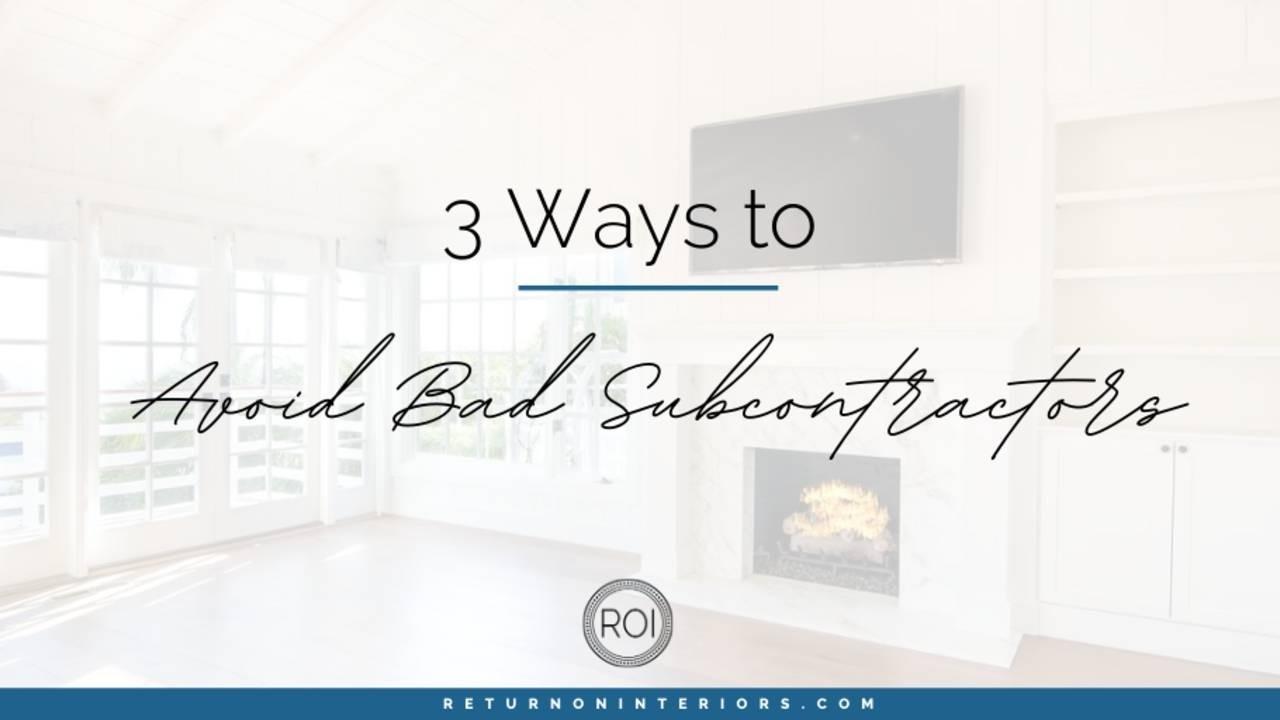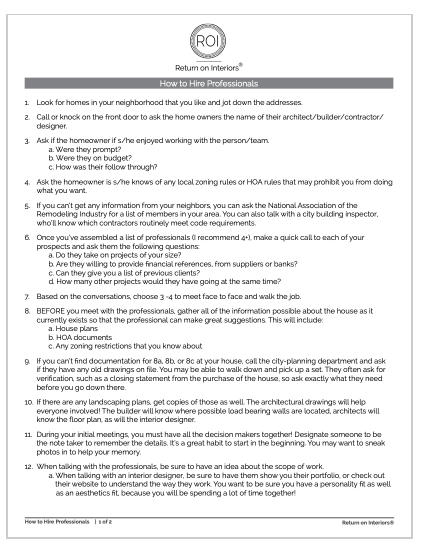
3 Ways to Avoid Bad Subcontractors
There are so many horror stories in our industry about bad subcontractors. Like the tile installer who took off with your client's payment, AND without finishing the job. Or the movers who showed up in dirty shirts and showing way too much of the "plumber butt" than anyone should ever see. Or the drapery installer who said the too-short drapes were entirely your fault - and it turned into a huge issue that took too much of your time and energy.
Hiring others to work on a job with you can be a huge pain. But the care you take up front will pay off in the long run. I know - I've had my own scary stories with subs, especially because I've worked for decades flipping houses, too. So I've learned a few things, like the top 3 ways you can avoid those bad apples.
1. Referrals and Reviews Are Key
The very best way to sort the good from the bad is to get referrals from other designers in your area. Word of mouth is our best referral tool, and there's a reason. If other professionals liked working with the person or company you're reviewing, that's usually a good sign. If you found the sub in some other way, check for references and reviews. Too often we think that if someone is able to give us a reference then they must be ok. Uh, no. You need to actually CALL those references! Ask them pointed questions, particularly if they had any hesitation working with that subcontractor again. And look at online reviews of the sub's work. Yes, some of those can be fake, but use them as a barometer along with references to see if there are any trends.
2. Meet on Their Turf
When you have your initial meeting with a company, do it on their turf and at their office. Things to watch out for would be a sketchy office, unprofessional behavior, no apparent systems, and no safety regulations. The office should look like a legitimate business and have all the right permits, insurance, and marketing materials that you would expect them to have. You also want to understand how many other jobs they have and if they can handle yours at the same time. If you can, see if you can also visit any of their current or past jobs to see their work. And for projects that require staffing from your subs, be sure you understand whether they can scale up for a larger job.

3. Big Red Flags
There are some major red flags you should always watch out for. If a sub asks you for shady under-the-table payment deals, that's a big one. Of course you don't want to pay them upfront in full, either. Anyone who asks you to do that isn't someone you want to work with. You also don't want to work with a sub who won't sign a contract or agreement with you. A good sub should also ask you a lot of questions so they understand the job. If they don't, they may not be the person for you. Trust your intuition, too - if something makes you feel "off" about that person, then don't hire them.
Remember that you also have a role to play in hiring the best subcontractors. You want to be completely honest about the scope and budget for the project. And you want to be sure that you always pay fairly and don't lowball the job. Because when you find a great sub, you want to hang onto them!
To help you get the right people in place, download my FREE Guide to How to Hire Professionals here! It will help you create the very best team for your projects!


 Get almost 50
Get almost 50



